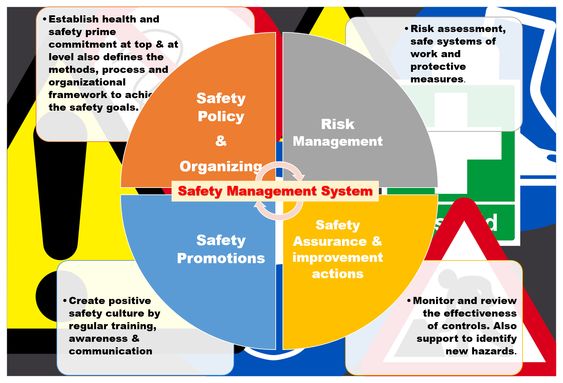Safety risk management is a process of assessing, controlling, and monitoring risks associated with any activity or operation. It is a proactive approach to ensure that the risks associated with any activity or operation are minimized or eliminated. This article will provide a brief introduction to safety risk management and its importance.
What is Safety Risk Management?
Safety risk management is an organized approach to identify, assess, and control risks associated with any activity or operation. It is a proactive approach to ensure that the risks associated with any activity or operation are minimized or eliminated. It is an important part of any safety program and is essential for any organization to ensure the safety of its employees and customers.
Benefits of Safety Risk Management
Safety risk management can provide many benefits to an organization. It can help identify potential hazards and risks before they become a problem. It can also help reduce the costs associated with accidents and injuries. Additionally, it can help improve the overall efficiency and productivity of an organization by reducing the time and resources spent on dealing with safety issues.
Steps of Safety Risk Management
Safety risk management involves several steps that must be taken in order to effectively manage risks. These steps include:
1. Identifying potential hazards and risks.
2. Assessing the potential risks.
3. Developing strategies for controlling and mitigating the risks.
4. Implementing the strategies.
5. Monitoring and evaluating the effectiveness of the strategies.
Tools and Techniques for Safety Risk Management
There are several tools and techniques that can be used to help manage safety risks. These include:
1. Risk assessment tools – These tools are used to identify, assess, and control risks.
2. Risk management software – This software is used to help analyze and manage risks.
3. Risk mitigation strategies – These strategies are used to reduce or eliminate the risks associated with any activity or operation.
4. Risk communication – This is used to ensure that all stakeholders are aware of the risks associated with any activity or operation.
How to Implement Safety Risk Management
Safety risk management should be implemented in a systematic and organized manner. This includes:
1. Establishing a safety risk management plan.
2. Developing risk management policies and procedures.
3. Training personnel on risk management.
4. Establishing a system for monitoring and evaluating risks.
5. Developing a system for reporting and responding to risks.
The Importance of Safety Risk Management
Safety risk management is an important part of any safety program. It is essential for any organization to ensure the safety of its employees and customers. By implementing a safety risk management program, organizations can reduce the costs associated with accidents and injuries, improve the overall efficiency and productivity of the organization, and reduce the risks associated with any activity or operation.
You might find these FREE courses useful
- Security & Safety Challenges in a Globalized World
- Risk in Modern Society
- Designing for Sustainment: Keeping Improvement Work
Conclusion
Safety risk management is a process of assessing, controlling, and monitoring risks associated with any activity or operation. It is an important part of any safety program and is essential for any organization to ensure the safety of its employees and customers. By implementing a safety risk management program, organizations can reduce the costs associated with accidents and injuries, improve the overall efficiency and productivity of the organization, and reduce the risks associated with any activity or operation.


